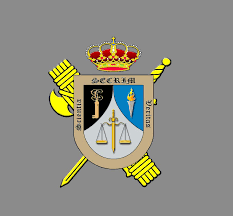

Legal and the Law in Spain
Uniform and clothing enforcement limits clarified
A recent ruling by the Supreme Court has once again reignited the debate about uniforms and employee clothing, and to what extent a business can impose a certain uniform. According to the ruling, the union demand wanted to eliminate the possibility that employees, security guards at department stores, would have to wear ties in the summer, due to weather reasons.
The Supreme Court (TS), in this regard, ruled in favour of the company and dismissed the lawsuit from the employee representatives. These workers will have to wear the tie as part of their uniform regardless of whether it is the summer season. As the ruling states, “the decision regarding the tie corresponds to the business, which would only be limited in its decision when the uniform does not respect the dignity of the worker, which does not happen in this case.” In addition, the magistrates recall in it the existing agreement between business and employees regarding the use of ties.
Luis San José, labour lawyer and partner at AGM Abogados, explained that the limitations on clothing and uniforms required in the workplace. “The limit is marked by what has been previously agreed between the self-employed and employees, on the one hand, and on the other, whether or not it harms the dignity of the worker. If the uniform affects the dignity of the worker, the case could be successfully taken to court.”
Thus, it will also be necessary to ensure that discrimination does not occur between men and women, “as stated in the other Supreme Court ruling of 2011, where it was established that women could choose whether to wear pants or a skirt as a uniform.”
As Luis San José explained, the clothing or uniform of employees will be limited by “what has been previously agreed or agreed upon.” In this area, the use of a uniform may be required by employment contract, or it may be that the business has signed a dress code with employees.
The choice of both uniformity and clothing protocol is legitimised by the self-employed person or business when it is supported by the prior agreement with the workers. “It lies in the right to freedom of enterprise of the self-employed person or entrepreneur, in the power to direct and organise work. The Supreme Court agrees in the case of the security workers because it adheres to what was stipulated by agreement.”
In the particular case of the dress code, “which can generate greater controversy,” it is a set of guidelines that allow establishing what type of clothing is considered appropriate for going to work. “It is a common situation in certain businesses, where these guidelines establish, for example, the use of a suit and tie when they have to visit a client.”
As San José explained, it is necessary that the clothing protocol be signed by the employees so that their requirements are enforceable. Therefore, if you want to establish limits on clothing in the workplace, “this agreement must be signed. Otherwise, the business will not be able to prevent an employee from coming with certain items of clothing.”
The self-employed person or company, therefore, will not be able to penalise workers if a dress code has not been previously agreed upon and signed. And the dress code “known to the employee.” As San José detailed, the protocol must be notified to the worker, the usual form of communication being the inclusion of an annex in the signing of the contract when a new worker is incorporated, with acknowledgment of receipt.
Finally, as the lawyer added, although employees must know the protocol, signing a dress code does not force businesses to pay “a uniformity premium.”
The other limit in workers’ clothing is that they must respect the worker’s dignity. “In the case of the Supreme Court that we are dealing with, the use of the tie does not harm or affect the dignity of the workers in any way. It is another of the fundamental reasons on which the sentence is based,” San José clarified.
In this sense, as the lawyer pointed out, wearing a certain uniform or clothing cannot harm the dignity or honour of employees, or any other fundamental right. “This area also includes non-discrimination between men and women.”
This is what happens in another striking TS ruling from 2011, where the Supreme Court established that women could “choose whether they wanted to wear pants or a skirt as a uniform.” In this ruling, there was a conflict where the workers’ representatives sued a healthcare company for requiring its workers to wear a uniform with a skirt, apron and cap, while male workers wore sanitary scrubs, as explained by San José. “The ruling was in favour of the workers. The magistrates decided there was discrimination and that they could wear both types of uniform.
More recent is the sanction imposed last year by the Labor Inspection of the Generalitat on Vueling, who stipulated a fine of 30,000 euro last year for the airline for “considering it discriminatory” to apply certain criteria to the flight attendants’ clothing . They were forced to wear heels between five and eight centimetres, and to put on makeup and apply mascara before work shifts.
The post Uniform and clothing enforcement limits clarified appeared first on Spain Today – Breaking Spanish News, Sport, and Information.
-

 Around Spain2 weeks ago
Around Spain2 weeks agoMan arrested for 34 phone thefts at Primavera Sound festival
-

 News2 weeks ago
News2 weeks agoShopping basket spend increased 3 percent in April
-

 Environment and Weather2 weeks ago
Environment and Weather2 weeks agoThe Ebro Dam is NOT flooding – It is just a drill
-

 Around Spain7 days ago
Around Spain7 days agoBoth Main Political Parties Increase Vote Share but Lose Votes in Torrevieja




















